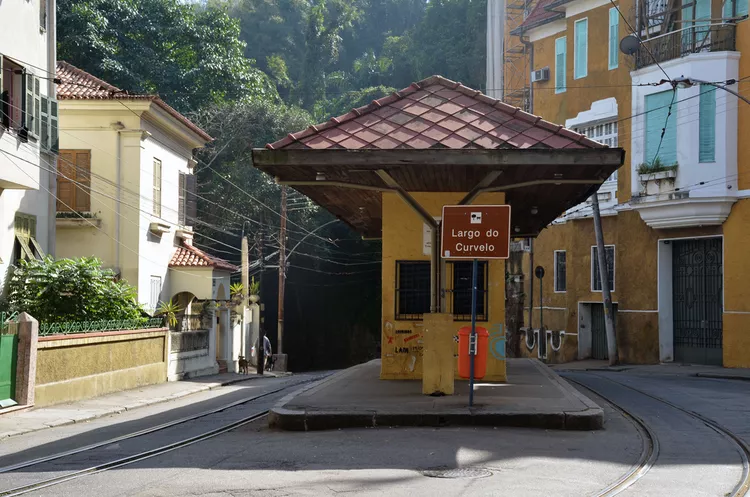Santa Teresa holds a special place in Rio de Janeiro’s affections. Santa, as it’s known locally, is a hilltop district steeped in the past, an artsy bairro that, although not too close to the beach, is endowed with countless vantage points and home to a loving, combative community that’s eager to defend its cultural heritage.
Santa Teresa History
In 1750, sisters Jacinta and Francisca Rodrigues Ayres obtained permission from the colonial government of Rio de Janeiro to start a convent in a chácara on Morro do Desterro, or Exile Hill. They dedicated the convent to St. Teresa of Avila.
One of the factors boosting the development of Santa Teresa was its preserved situation during the cholera epidemics, which decimated approximately 200,000 people in Rio de Janeiro in the second half of the nineteenth century.
It was also during this time that the first steam-powered tram line began operations. In 1892, the Carioca Aqueduct, also known as the Lapa Arches, started serving as a viaduct for the new electric tram system.
In the following decades, Santa Teresa witnessed a growth in the number of pleasant chácaras and luxury homes, often designed to maximize the privileged views of Rio de Janeiro and Guanabara Bay.
Santa Teresa and Lapa
The image of the Santa Teresa tram running on the Lapa Arches has long symbolized the ties between the district and neighboring Lapa, which were intensified in the first half of the twentieth century.
Both districts attracted intellectuals and artists; great names in Brazilian arts, music, and poetry enjoyed visiting Lapa’s cabarets and attending Santa Teresa soirées.
Today, visitors can still discover those ties as they explore Santa Teresa’s art studios, restaurants, and cultural venues alongside the vibrant nightlife of Lapa.
Santa Teresa underwent a phase of decline before being revitalized by local organizations, demonstrating the resilience of its community.
What to See and Do in Santa Teresa
Among the most famous attractions in Santa Teresa is the Selarón staircase, a unique physical connection between Santa Teresa and Lapa. Created by Chilean artist Selarón (1947-2013), who relocated to Brazil in 1983, the staircase is a stunning mosaic work that represents his dedication to art. Tragically, he passed away in January 2013, leaving around this vibrant piece his legacy.
As one of the best examples in Brazil of an artist’s commitment to a continuous work of art, this 125-step staircase features mosaics that were periodically updated thanks to a special technique developed by Selarón. It starts behind Sala Cecília Meirelles, a cultural venue in Lapa, and ends at the Santa Teresa Convent, the district’s point of origin.
Santa Teresa’s architectural charm can be appreciated from the outside at its largos, or squares. Notable landmarks include the Santa Teresa Convent, the Ship House (Casa Navio, 1938), and Valentim Castle (Castelo de Valentim, late nineteenth century), located near Largo do Curvelo.
Largo dos Guimarães serves as Santa Teresa’s bustling hub, featuring numerous restaurants, bars, and art studios. Nearby Largo das Neves, the final tram stop, also boasts popular bars and the Nossa Senhora das Neves Church.
Perched on the Santa Teresa hill are some of the most picturesque cultural centers in Rio de Janeiro. Parque das Ruínas (Ruins Park) emerged from what remained of Laurinda Santos Lobo’s home, who was a central figure in Santa Teresa’s cultural life until her passing in 1946. The cultural center offers breathtaking 360-degree views and hosts a variety of exhibits and shows.
Centro Cultural Laurinda Santos Lobo (Rua Monte Alegre 306, phone: 55-21-2242-9741) occupies a vintage Santa Teresa house and pays homage to this remarkable woman through various exhibits.
Similarly, the Centro Cultural Casa de Benjamin Constant, located on the same street, was home to Brazil’s prominent republicanist. The museum and its grounds exemplify a classic Santa Teresa chácara.
For those who appreciate private art collections and house museums, Museu da Chárica do Céu is a must-visit attraction, providing stunning views alongside its impressive collection.





